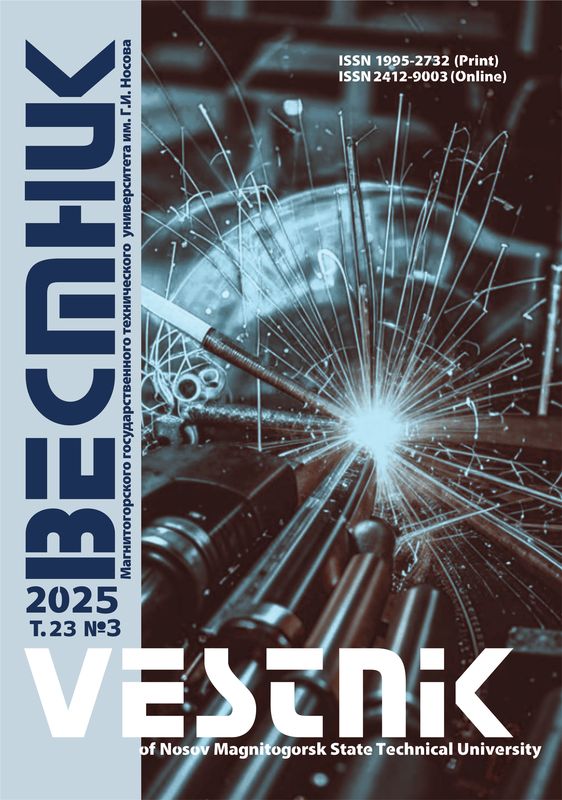Abstract
Problem Statement: This article describes a laboratory installation designed by the Department of Theory and Automation of Metallurgical Processes and Furnaces of the North Caucasian Institute of Mining and Metallurgy (the State Technological University). The article also describes how the installation functions and the research procedure applied. Objectives: This work aims to improve laboratory equipment to provide a visual representation of heat transfer processes. Originality: In comparison with its counterparts, this installation can help obtain a great number of thermal parameters which are necessary for studying and modeling of heat transfer processes. Findings: The developed unit enables to study the heat transfer processes by way of simulation using a mathematical model based on the zonal method. Due to its design, the unit can be quickly re-adjusted to run in counter-flow mode instead of once-through mode. It has an automatic control and adjustment functionality. Practical Relevance: The unit gives an insight into heat transfer, heat flows and the heat exchange regularities, and it provides a practical guide which can be used for training highly qualified personnel.
Keywords
Mathematical modeling, study of heat transfer, laboratory units, recuperators.
1. Migay V.K. Povyshenie effektivnosti sovremennykh teploobmennikov [Improving the efficiency of modern heat exchangers]. Leningrad: Energiya, 1980, 144 p. (In Russ.)
2. Spravochnik po teploobmennikam [Handbook of heat exchangers]. In 2 volumes. Vol. 1, trans. from English. Ed. by O.G. Martynenko et al. Moscow: Energoatomizdat, 1987, 352 p. (In Russ.)
3. Popov I.A., Gortyshov Yu.F., Olimpiev V.V. Industrial application of intensified heat transfer technology – The current status of the problem (overview). Teploenergetika [Heat power engineering], 2012, no. 1, pp. 3–14. (In Russ.)
4. Antufiev V.M. Effektivnost’ razlichnykh form konvektivnykh poverkhnostey nagreva [The effectiveness of convection heat surfaces of various design]. Moscow: Energiya, 1966, 184 p. (In Russ.)
5. Kern D., Kraus A. Razvitye poverkhnosti teploobmena [Extended heat transfer surfaces]. Moscow: Energiya, 1977, 464 p. (In Russ.)
6. Kalinin E.K. Effektivnye poverkhnosti teploobmena [Efficient heat transfer surfaces]. Moscow: Energoatomizdat, 1998, 408 p. (In Russ.)
7. Gerasimenko T.E., Meshkov E.I., Dikareva A.V. The status and the problems of industrial furnace gas heat recovery and the incentives for it. Tsvetnaya metallurgiya [Non-ferrous metallurgy], 2011, no. 1, pp. 30–35. (In Russ.)
8. Spitsin V.M., Karavaev V.I. Ustanovka dlya issledovaniya raboty teploobmennogo apparata [A unit for studying the heat exchanger in operation]. C.S. SU, no. 1695123, 1991.
9. Enyutina T.A., Marchenkova S.G. Patent RU, no. 65277, 2007. (In Russ.)
10. Einstein V.G., Zakharov M.K., Nosov G.A. et al. Obshchiy kurs protsessov i apparatov khimicheskoy tekhnologii [The general course in chemical processes and units]. Ed. by Einstein V.G. Moscow: Khimiya, 2000, 1760 p. (In Russ.)
11. Gerasimenko T.E., Meshkov E.I., Tomilina A.A. Improving and identifying the mathematical model for the calcination of carbon materials in a rotary kiln. Vestnik Magnitogorskogo Gosudarstvennogo Tekhnicheskogo Universiteta im. G.I. Nosova [Vestnik of Nosov Magnitogorsk State Technical University], 2016, no. 2, pp. 116–125. (In Russ.)
12. Arounyants G.G., Rutkovskiy A.L. Mathematical modeling as part of designing control systems for complex objects. Kaliningrad: Publishing House of KSTU, 2011, 304 p. (In Russ.)












